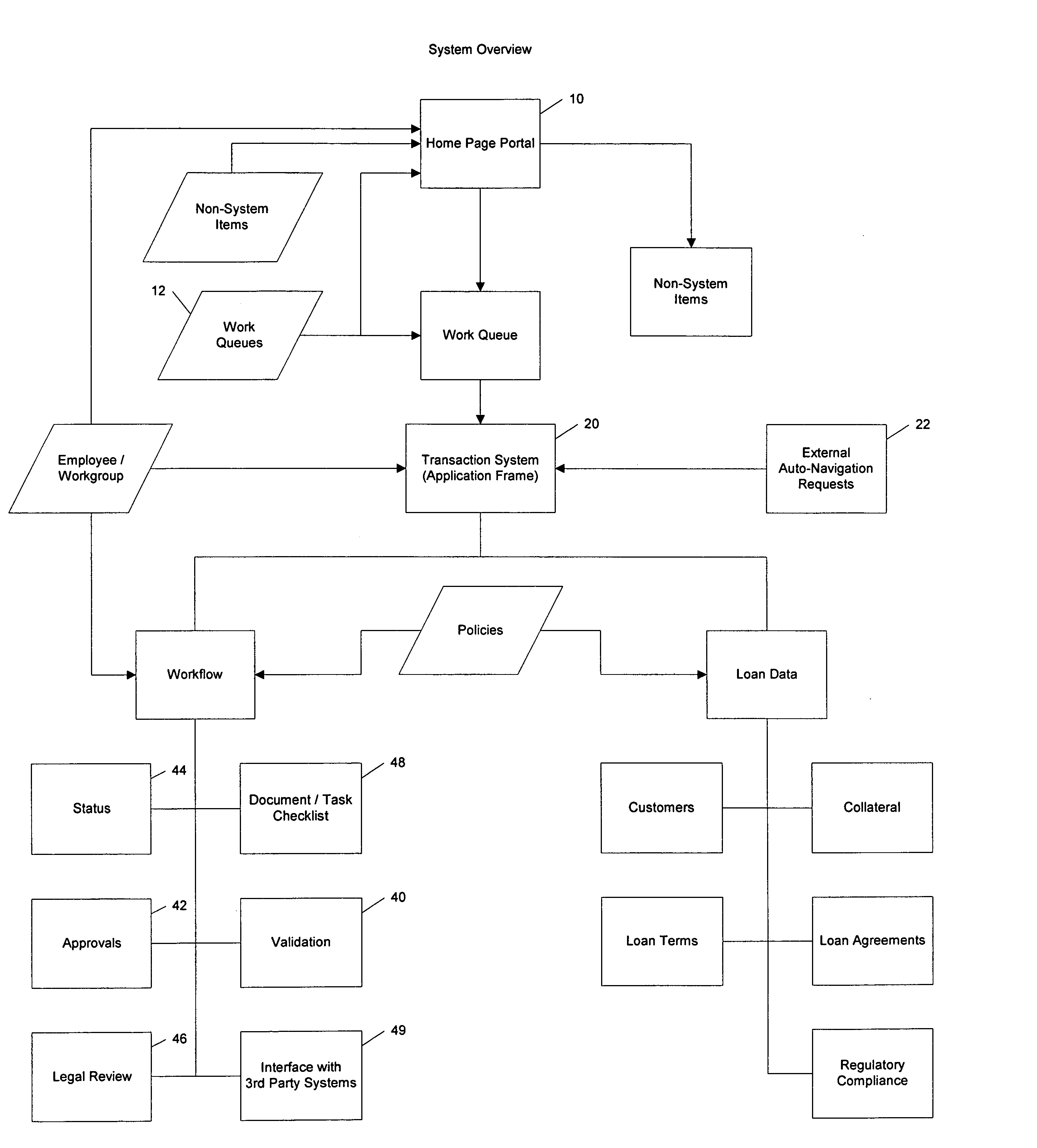Processing commercial transactions is a complicated process involving organizations as customers, institutional-wide policies and numerous tasks that must be completed by various departments within banks, hospitals, warehouses, manufacturing facilities or other industrial, commercial, financial, health care or government institutions.
However, the user simply wanted to know what transactions needed his approval, current systems would have difficulty providing that type of information.
In another example a clerk may be able to prepare loan documents based upon loan transaction information; however, the
document preparation system does not instruct the clerk which loan transactions need to have documents prepared.
The current method does not allow the user to select a subset of data relevant to the user.
With the complexity of these systems, it is often difficult to remember specifically where an item is within the system, and the user is required to spend non-productive time trying to locate the item.
In addition to the confusing, inconsistent graphical interfaces between the different systems, when a new screen or function is added additional
programming is required to modify menus and system navigation logic.
The result is a confusing
user interface for users to operate and a system with higher maintenance costs because of its inflexibility.
In the course of the life cycle of the transaction, the transaction suffers from inefficient
processing of the transaction because there are many changes in the transaction which are untracked and / or undocumented.
At a given point in time, it is difficult to determine which steps have been completed and which are outstanding as the transaction progresses through its life-cycle.
The status is therefore difficult to determine at any given point in time.
Because of the uncertainty in determining the transaction's status, there is a general lack of accountability for the transaction and there is a risk that some critical tasks remain unperformed or that transaction processors may be unaware of needed action.
In current transaction systems, this approval is complicated,
time consuming, highly susceptible to
human error and can be disruptive to
processing workflow and transaction closing deadlines.
This tracking is
time consuming, subjective and highly dependent on well-trained and knowledgeable loan servicing staff.
Further, because financial institutions are often spread-out over various distances in different officees, senior lenders and managers may be located in different facilities and the loan documents may be missing one of the required signatures.
This method is
time consuming, subject to error and can be disruptive to meeting the turnaround times required for loan
processing.
Some examples include a request for customized loan language or changes of specific loan terms, or the borrower may have had a negative history with the institution, or be within a highly volatile industry with questionable
longevity.
In addition, existing systems often provide no effective means to track and ensure that the institution's legal review policies are followed.
Failure to follow proper legal review can result in drastic consequences, including an inability to collect on the loan or a loss of rights to take the collateral which was pledged against repayment of the loan.
In addition to the complexities surrounding an institution, the customer and collateral involve unique complexities.
The collateral which is used to secure a commercial loan also has complex qualities.
 Login to View More
Login to View More  Login to View More
Login to View More 


